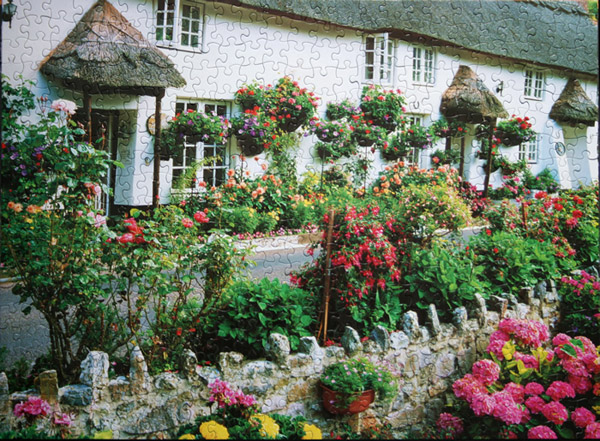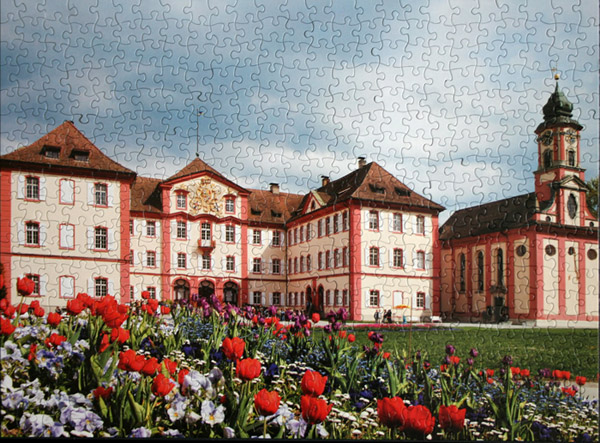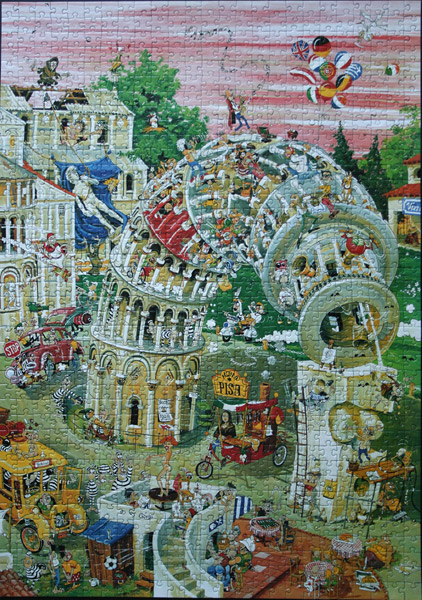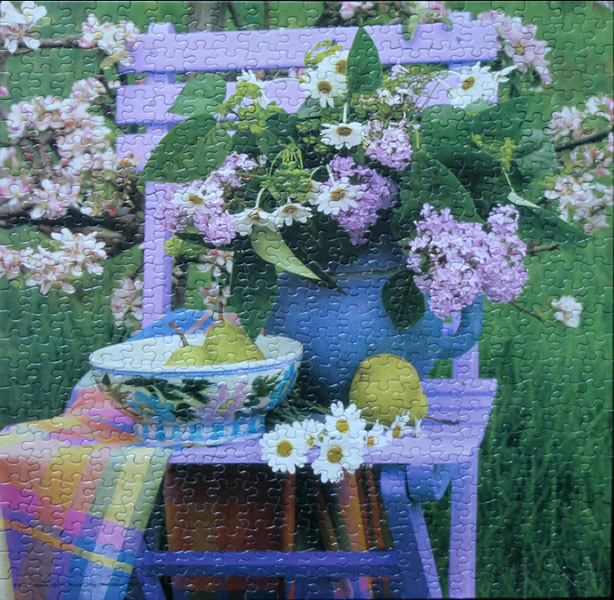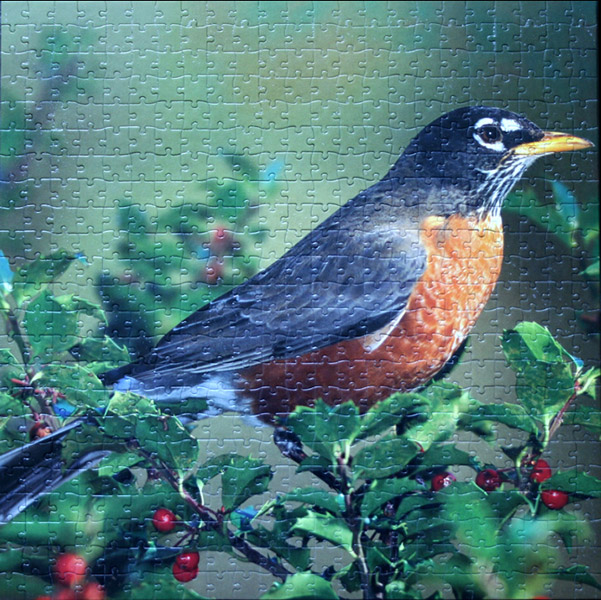
Size: 1000 pieces
Notes: I do not have a record of the dimensions or the producer of this puzzle as I do not have the box anymore. A clarification is welcome – if you have any clue as to the details regarding this puzzle, I would much appreciate that information.
The pear is any of several tree species of genus Pyrus and also the name of the pomaceous fruit of these trees. Several species of pear are valued by humans for their edible fruit, but the fruit of other species is small, hard, and astringent.
The genus Pyrus is classified in subtribe Pyrinae within tribe Pyreae. The apple (Malus domestica), which it resembles in floral structure, is also a member of this subcategory.
Pears grow in the sublime orchard of Alcinous, in Odyssey vii: “Therein grow trees, tall and luxuriant, pears and pomegranates and apple-trees with their bright fruit, and sweet figs, and luxuriant olives. Of these the fruit perishes not nor fails in winter or in summer, but lasts throughout the year.”
The pear was also cultivated by the Romans, who did not eat them raw: Pliny’s Natural History recommended stewing them with honey and noted three dozen varieties. The Roman cookbook attributed to Apicius, De re coquinaria, has a recipe for a spiced, stewed-pear patina, or soufflé. [Wiki]






